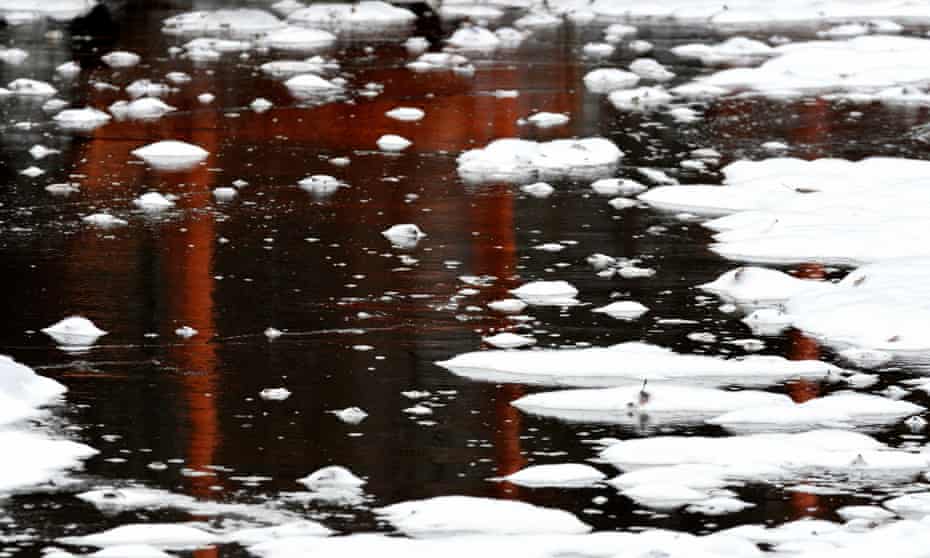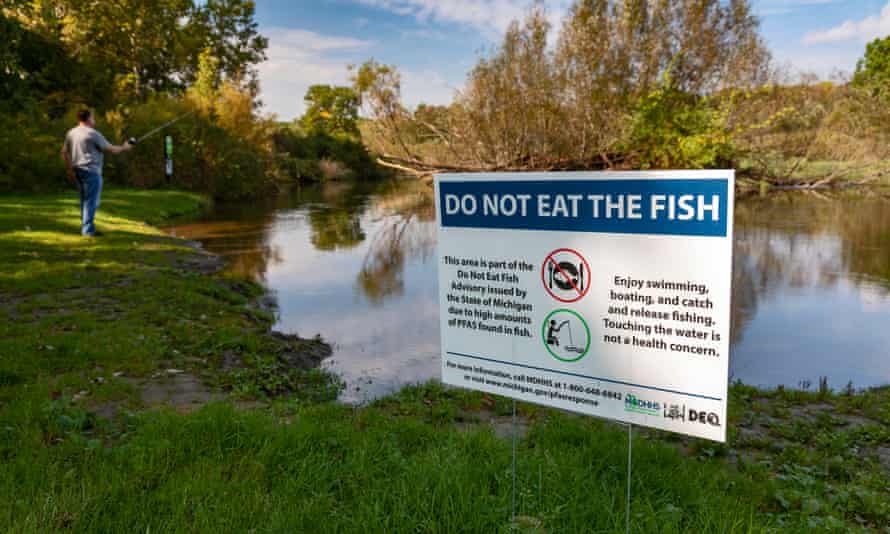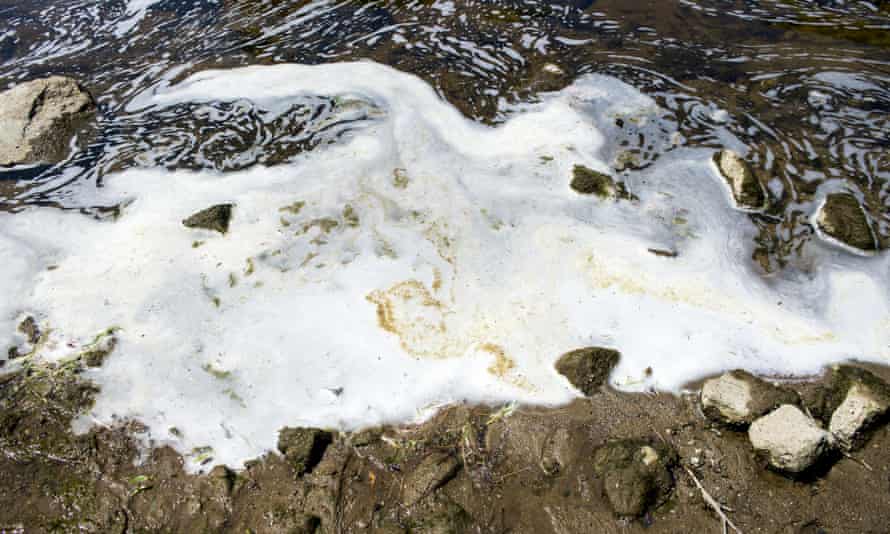‘This stuff won’t go away’: PFAS chemicals contaminate Wisconsin’s waterways and soil
Water sources used by millions of humans as well as wildlife poisoned with ‘forever chemicals’

Last year, residents in Campbell, Wisconsin, a four-square-mile island city in the Mississippi River, learned disturbing news: toxic PFAS “forever chemicals” used in firefighting foam at a neighboring airport had probably been contaminating their private wells for decades.
As state and local leaders search for a solution, residents now use bottled water for drinking, cooking and brushing their teeth. Yet the situation represents more than an enormous inconvenience. Some strongly suspect that the seemingly high rate of cancer, Crohn’s disease and other serious ailments that have plagued the island’s residents stem from the dangerous chemicals.
“It’s emotionally draining,” said Campbell town supervisor Lee Donahue. “People are angry that it happened, they’re angry that they had no control over it, and they’re angry that their well is contaminated for no fault of their own.”
Campbell isn’t alone. Across the US similar stories of water contaminated with PFAS are emerging.
PFAS, or per- and polyfluoroalkyl substances, are a class of chemicals used across dozens of industries to make products water, stain and heat resistant. They’re called “forever chemicals” because they don’t naturally break down, and they persist in the environment and accumulate in humans’ and animals’ bodies. The compounds are linked to cancer, decreased immunity, thyroid problems, birth defects, kidney disease, liver problems and a range of other serious diseases.
Between July and October, officials in nearby Eau Claire in Wisconsin shut down half its 16 municipal wells over PFAS contamination, and across the state PFAS have poisoned drinking water supplies, surface water in lakes and streams, air, soil and wildlife like deer and fish that are eaten by the state’s residents.
As municipalities and residents wrestle with the water crisis, the state’s Republican-controlled legislature has killed legislation and blocked funding meant to address the problem, which is likely much larger than currently known: only about 2% of the state’s utilities have tested for the chemicals, and those that have check for no more than 30 of the approximately 9,000 PFAS compounds that exist.
“We’ve had difficulty just testing water to get a handle on the scale and scope of PFAS contamination,” said Scott Laesar, water program director with the Clean Wisconsin advocacy group. “We are asking for some really basic information about what’s in people’s water, and if we can’t even get that, then we’re in a difficult spot.”
Wisconsin’s troubles aren’t unique. States around the US are contending with similar difficulties, as increased testing has revealed that drinking water supplies for more than 100 million people are contaminated with PFAS, and the Environmental Protection Agency recently revealed 120,000 sites across the country that may expose people to the chemicals.

The compounds’ ubiquity makes it difficult to determine sources of contamination, but Wisconsin airports and military bases that use PFAS-laden firefighting foam have often been identified as the culprit, including in Eau Claire, Madison, Milwaukee and Campbell.
The state’s combined groundwater standard for six types of PFAS is 20 parts per trillion (ppt), and the chemicals were detected at levels up to 70 ppt Eau Claire. Madison, a city of more than 250,000 and Wisconsin’s capital, found PFAS in all of its 16 drinking water wells in May 2020, but only at levels that exceeded health standards in one of them, which had been shut down months before.
Meanwhile, the lakes and streams around Madison are contaminated at startling levels. Officials have recorded counts for multiple compounds as high as 102,000 ppt, and levels in fish from nearby Lake Monona reached 180,000 ppt. Wisconsin department of natural resources signs posted along the region’s riverbanks warn residents against eating fish.
Cities like Milwaukee that draw drinking water from Lake Michigan on the state’s east side face less of a threat because the chemicals are diluted by the large body of water, but many private well owners who aren’t connected to municipal systems have recorded dangerous levels.
In Marinette, just north of Green Bay along Lake Michigan, a massive 10-sq-mile PFAS plume grew from a firefighting foam testing ground owned by manufacturer Tyco Fire Products. The plume hasn’t contaminated the municipal system at high levels, but levels in nearby private wells have reached 254,000 ppt, and alderman Doug Oitzinger said rates of thyroid disease and testicular cancer in young men in the region are “off the charts”. The plume has contaminated the city’s sewage sludge, which now has to be shipped to a specialized facility in Oregon.

“This stuff is in the groundwater and won’t go away,” Oitzinger said.
Polluting the lake still has wider consequences. PFAS have been found in a range of Great Lakes fish, and the DNR issued an advisory to limit the consumption of rainbow smelt.
Though residents across the political spectrum are being exposed and PFAS legislation has had at least some bipartisan support, Wisconsin’s Republican leadership last session killed the Clear Act, which would have established drinking water standards and funded cleanup, among other measures. The bill is once again stalled in the Republican-controlled legislature. Democratic governor Tony Evers’ last budget proposed $22m for statewide PFAS testing and cleanup, but that money was stripped away. The state legislature is expected to kill new limits on PFAS being developed by the DNR.
In Campbell, town officials are demanding that the Federal Aviation Administration stop using firefighting foam with PFAS, as is now required by law, but the airport continues using it, town supervisor Donahue said. The city of La Crosse, which owns the airport, has sued PFAS manufacturers for allegedly hiding the foam’s danger.
The cleanup effort is also meeting resistance from an unlikely source – water utilities, which say they don’t have money to filter the chemicals. Meanwhile, one of the few actions taken by the DNR that would require testing and cleanup faces a legal challenge from the Wisconsin Manufacturers and Commerce trade group, which represents some of the state’s PFAS polluters. Should the case go to the state’s supreme court, it will be heard by a pro-business, Republican-controlled judge panel.
“We have an industry that would rather not know what’s out there and is engaged in a pretty cynical effort to maintain the status quo,” Laeser said. “This legislature has had numerous opportunities to invest in addressing PFAS and they have elected not to do so.”